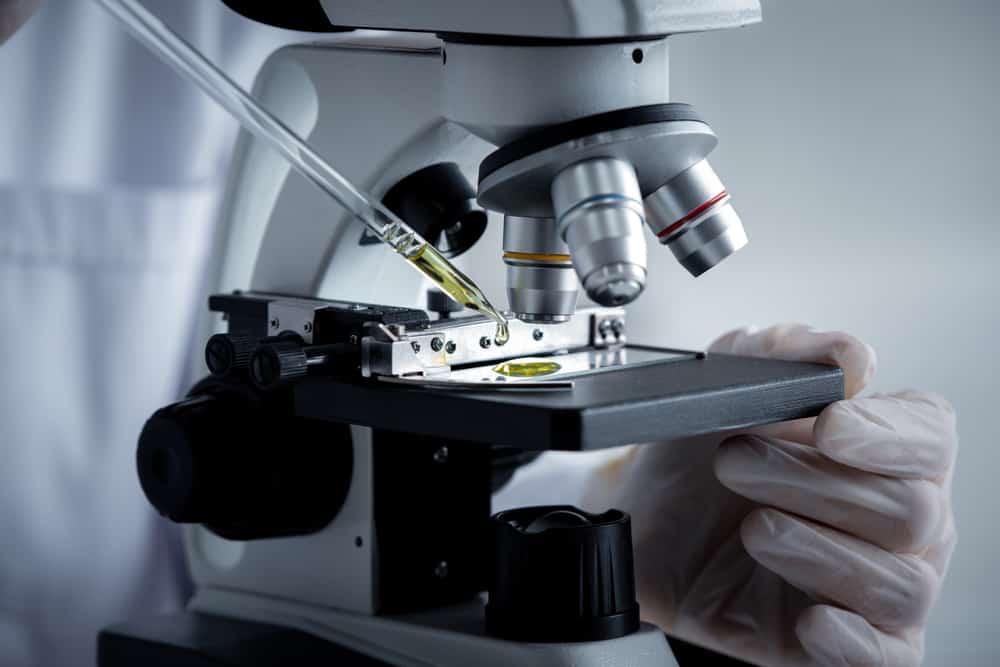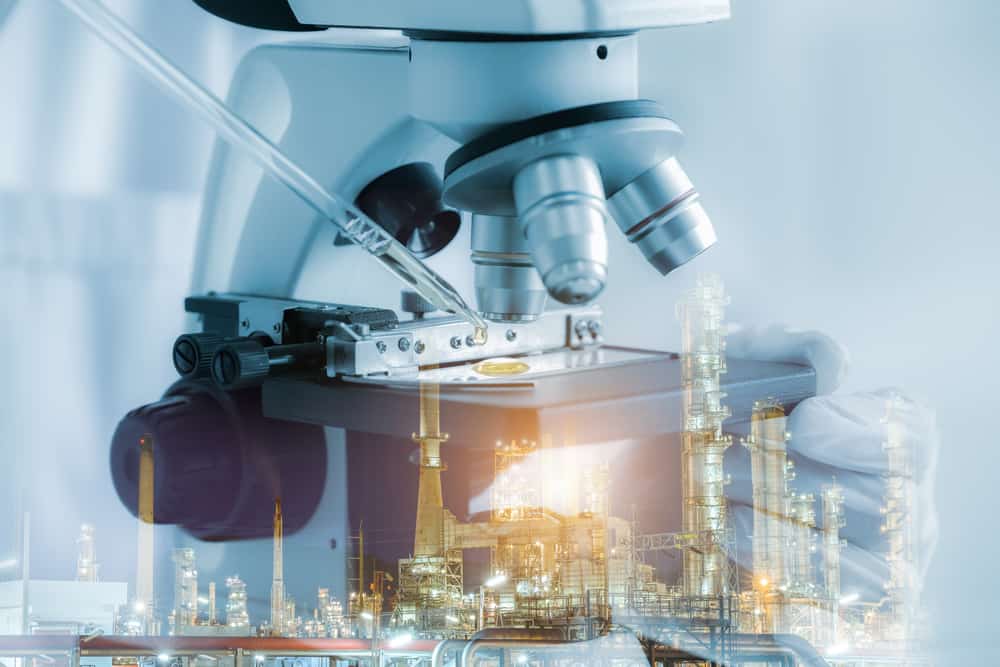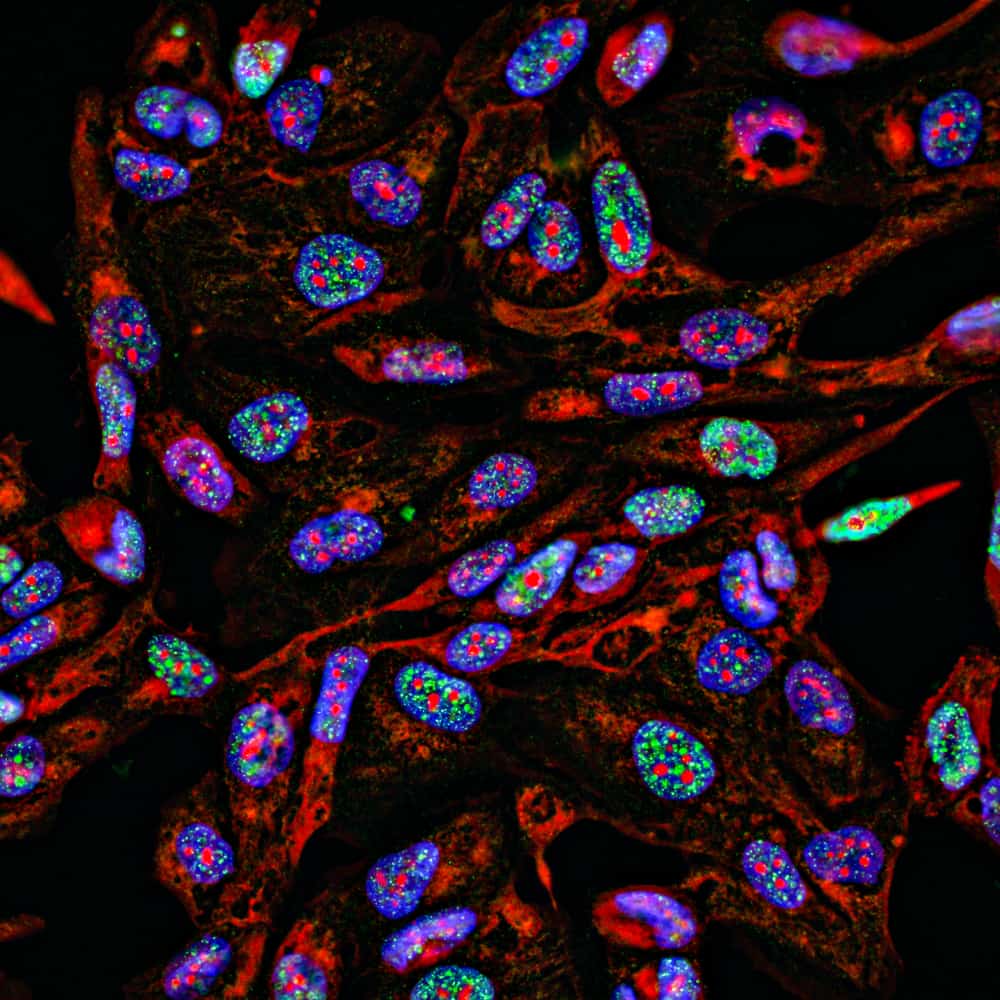
In the field of microscopy, it’s not uncommon to run into pieces of equipment that seem very similar to others of its type, only to find that they offer very different functions. Trinocular fluorescence microscopes are prime examples of this, as they can seem very similar to conventional light microscopes. However, once you delve more into what these microscopes are capable of, it’s easy to see their intended use and how it deviates from that of other microscopes.
Trinocular head microscopes are ideal for switching between three different degrees of magnification. This allows users to manage how they view different specimens and subjects easily and seamlessly shift between viewing various magnification levels of a specimen without switching out lenses. Fluorescent imaging of specimens allows users to more clearly distinguish different specimens, including cancer cells and various microbes. Now that we know more about a trinocular fluorescence microscope and what you might use it for, let’s learn more about these instruments.
Contents
What Are Trinocular Microscopes?
Trinocular microscopes might sound counterintuitive if you’ve never had to record your lab results, as the average person only has two eyes to see with, but have no fear – we get it. Trinocular head microscopes come with a third eye tube that, yes, you can see through if you like, but generally, this third tube holds a different purpose altogether, and that’s to let someone else, or more specifically, something else, view your results. That something is usually a computer or other technological system that you can directly upload your viewing results to.
You can instantly upload images or even videos taken with a trinocular microscope to an online or offline database. From there, you can use these images to reconstruct and manipulate images virtually. We’ll understand why this benefits scientists and researchers in just a bit.

What Is Fluorescent Microscopy?
It would take a lot of time if we were to break down all the differences between a conventional light microscope and a fluorescence microscope. It is sufficient to outline that fluorescence microscopy uses a light source of a much higher intensity than you’d expect to see from a traditional microscope. This intense light source is utilized effectively by the user labeling the sample they’d like to view with a fluorosphere or other fluorescent substance. This effectively causes specimens to glow as if they were bioluminescent, giving each detail in the specimen or sample much more prominence.
While this much light might sound like it would cause images to become blurred or unusable by most researchers, this is where the true practicality of a fluorescent microscope comes into play. By utilizing several filtration lenses and infinity-corrected optics, users can effectively filter out radiation from the fluorescent imaging process, allowing only the specimen to be that much more pronounced by the entire process. Usually, fluorescent imaging wouldn’t be visible to the human eye, but using these filtering methods allows you to view specimens in much greater detail than with a conventional light microscope.
What Are the Benefits of Fluorescent Microscopy?
Fluorescence microscopy comes with many benefits when compared to traditional microscopes. They allow users to break up images of tiny specimens into usable segments, making them ideal when examining microbes, bacteria, and other tiny life forms using phase contrast. By breaking up captured imagery into these various sections, users can more easily comprehend and label specific images of samples.
There’s another significant benefit to fluorescent microscopes. You can utilize them to produce high-resolution 3D images. Users can gain much more than a traditional 2D image of a subject by thoroughly breaking down images of samples and specimens. Fluorescent imaging almost functions like 3D printing in reverse by breaking down three-dimensional samples into a series of 2D images that are then reconstructed virtually with a computer. Researchers can then reconstruct these virtually, allowing them to reproduce realistic 3D models of their sampling. The benefits of this technology are numerous, as it will enable scientists and researchers to gain a much fuller picture of all kinds of microbes, bacteria, viruses, and more.

Practical Applications of Trinocular Fluorescence Microscopes
There are various practical applications of trinocular fluorescence microscopes, with a few major ones being as follows:
- Imaging genetic material that makes up DNA
- Viewing of individual cells that make up a larger system
- Discovering the status of various cells that make up larger systems
- Constructing images of the various parts that make up individual cells, microbes, and single-celled organisms
- Advanced viewing and understanding of organelles
Obviously, the potential for fluorescent microscopes is present in a wide range of industries. Fluorescent microscopy is most often used in medicine, pharmaceuticals, virology, and other areas of science. By allowing scientists and researchers to break down individual cells into their smallest components, fluorescent microscopes have made the jobs of geneticists, epidemiologists, and other medical professionals much easier.
The Verdict Is In: Trinocular Fluorescence Microscopes Are Highly Useful
Scientists and researchers can better understand and view their specimens with a quality fluorescent microscope. They can more easily manipulate images and videos and utilize them more thoroughly. The benefits of infinity-corrected optics are numerous, which is obvious once you delve a little bit into the subject. We hope that this article proved to be helpful to your understanding of what trinocular microscopes are and how they can better serve you, your business, your field of research, or whatever else you might be using one for!

